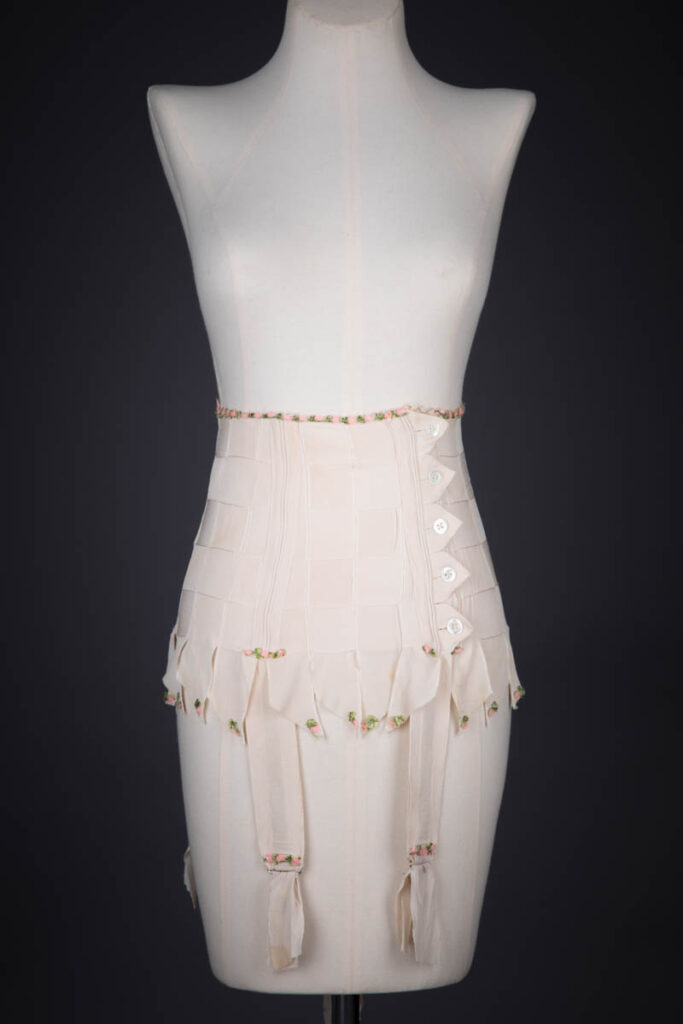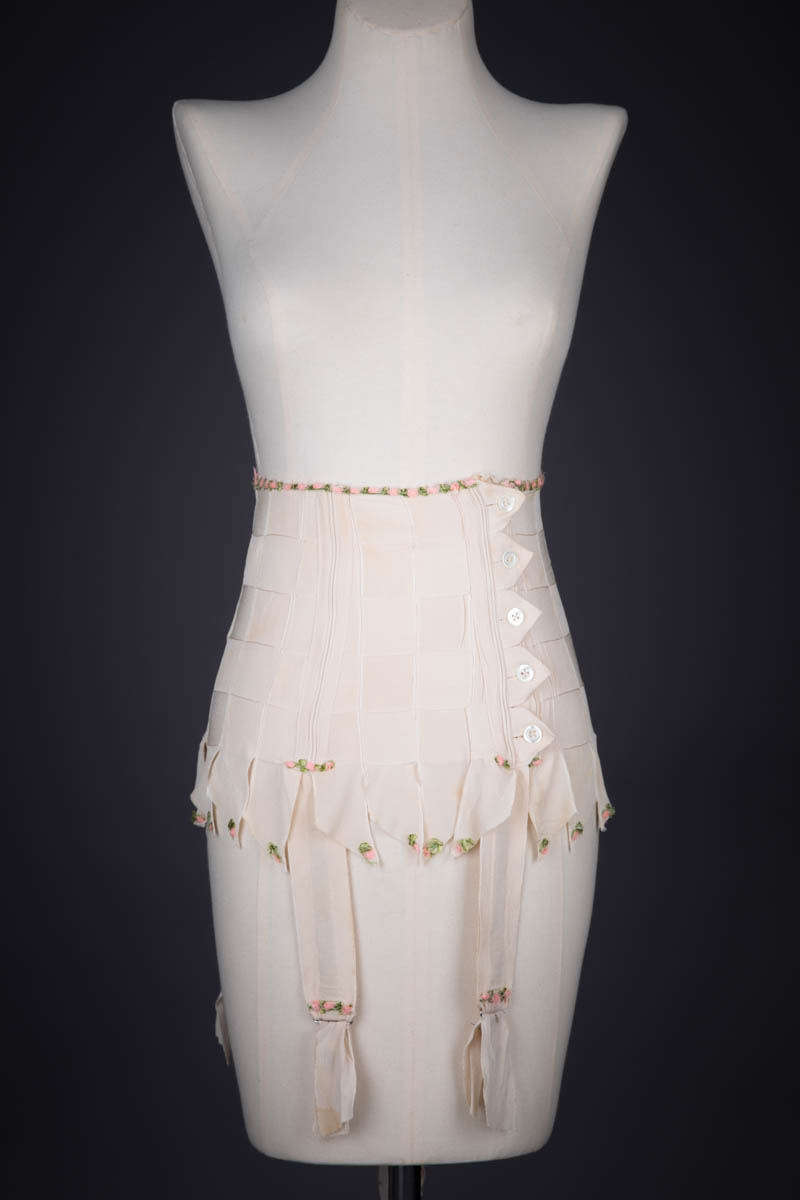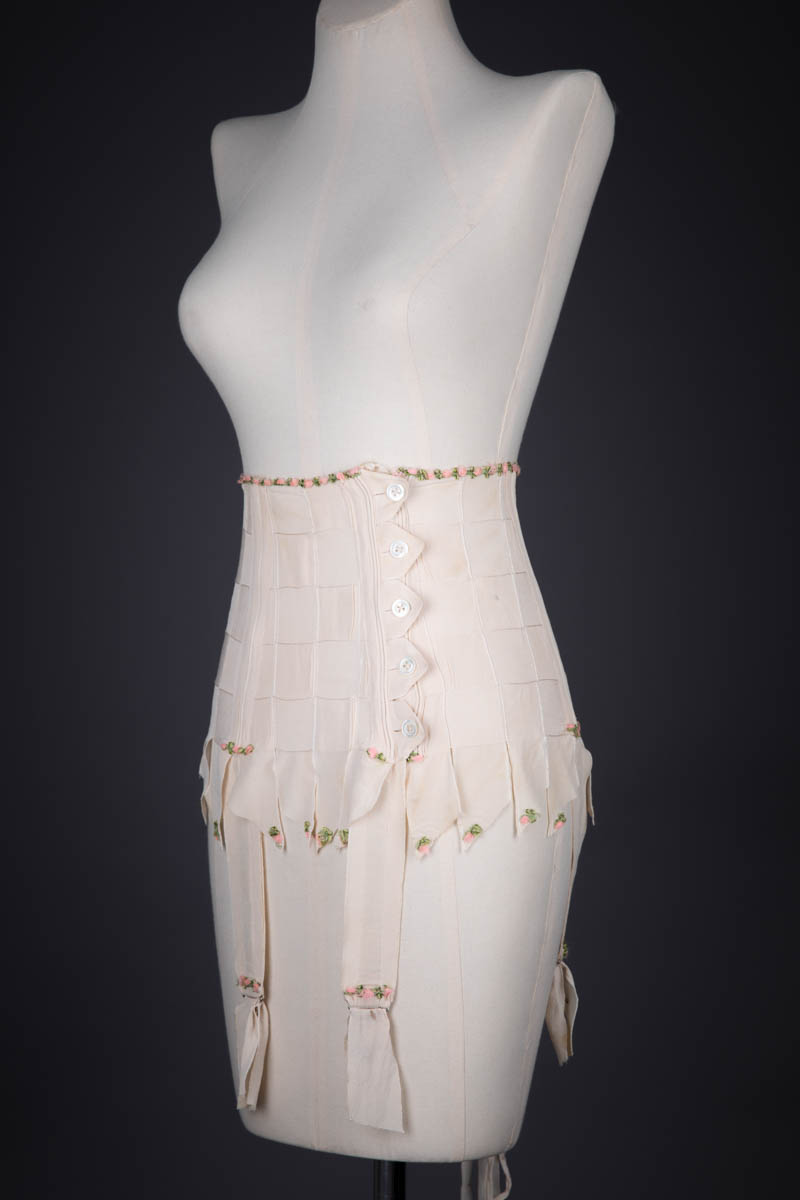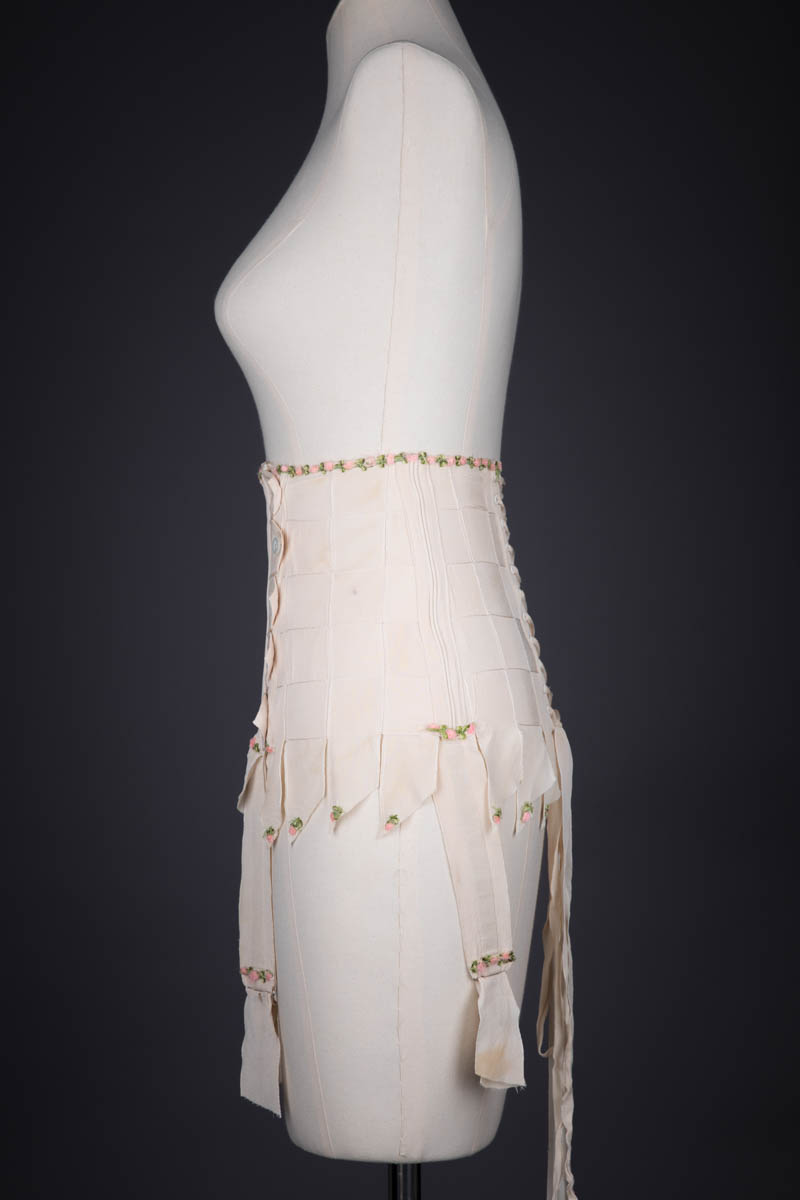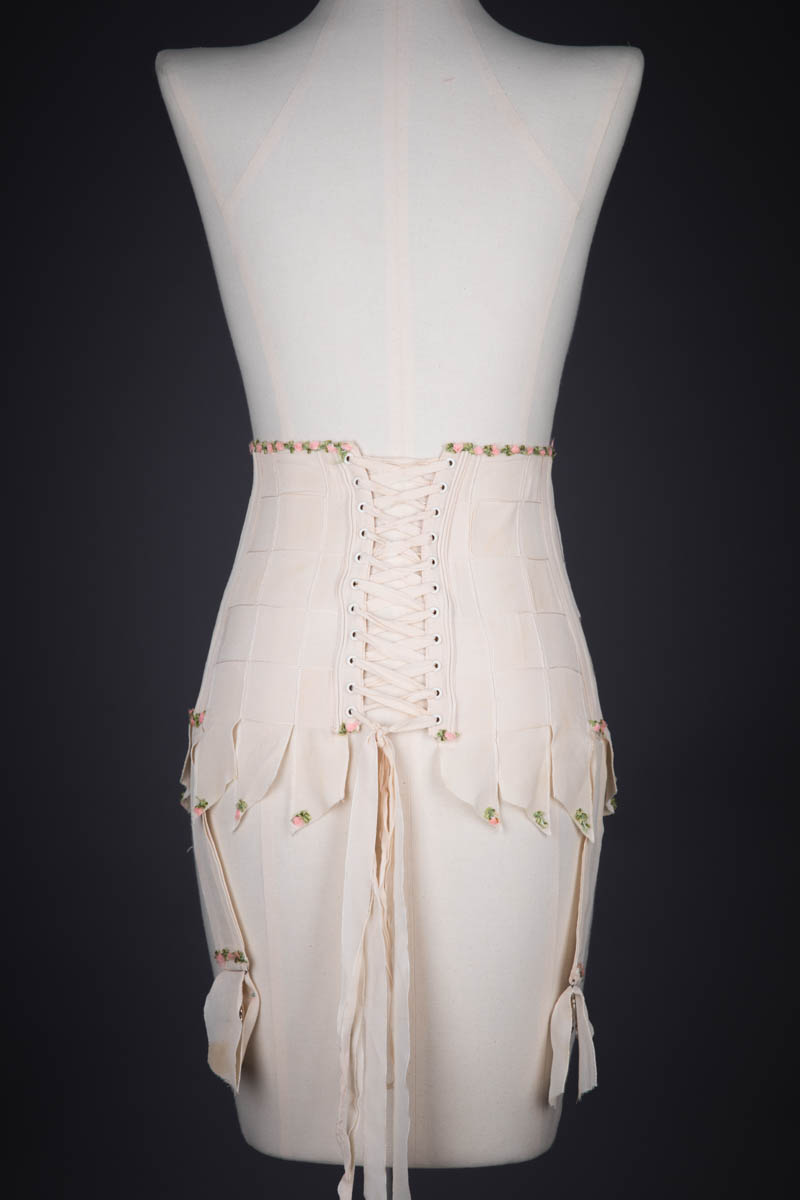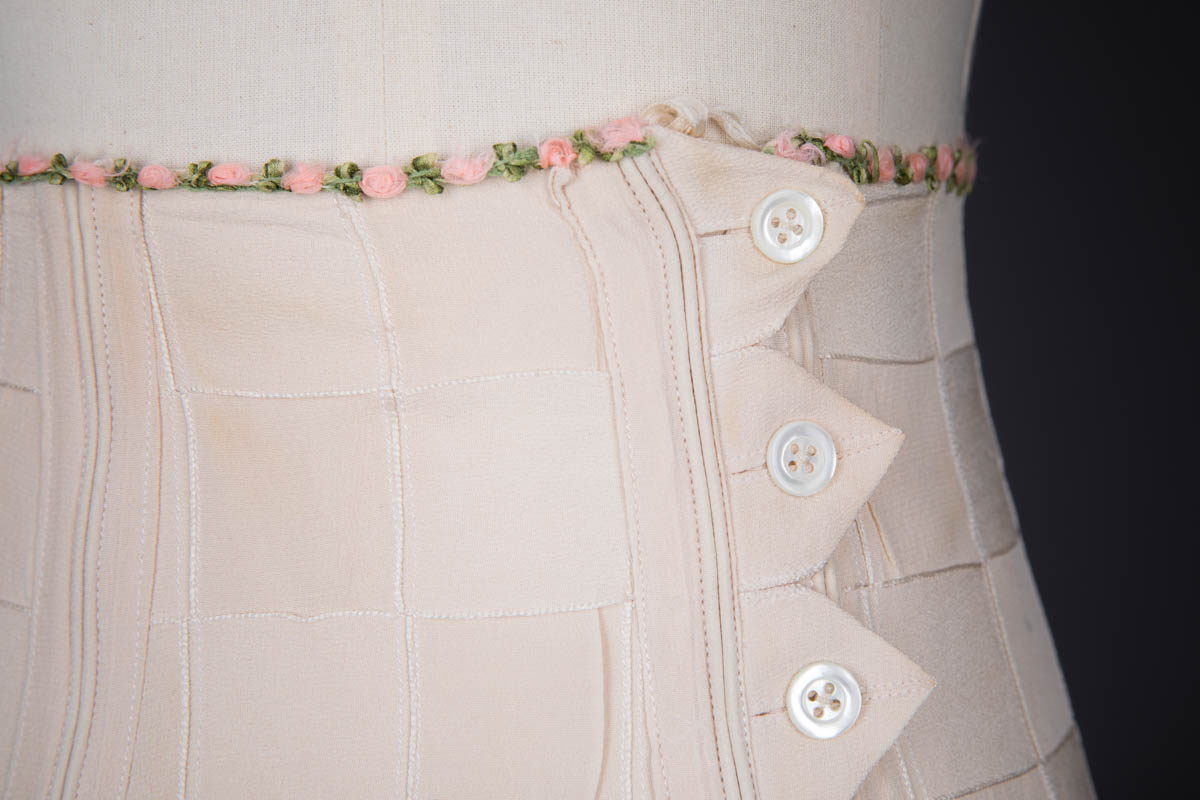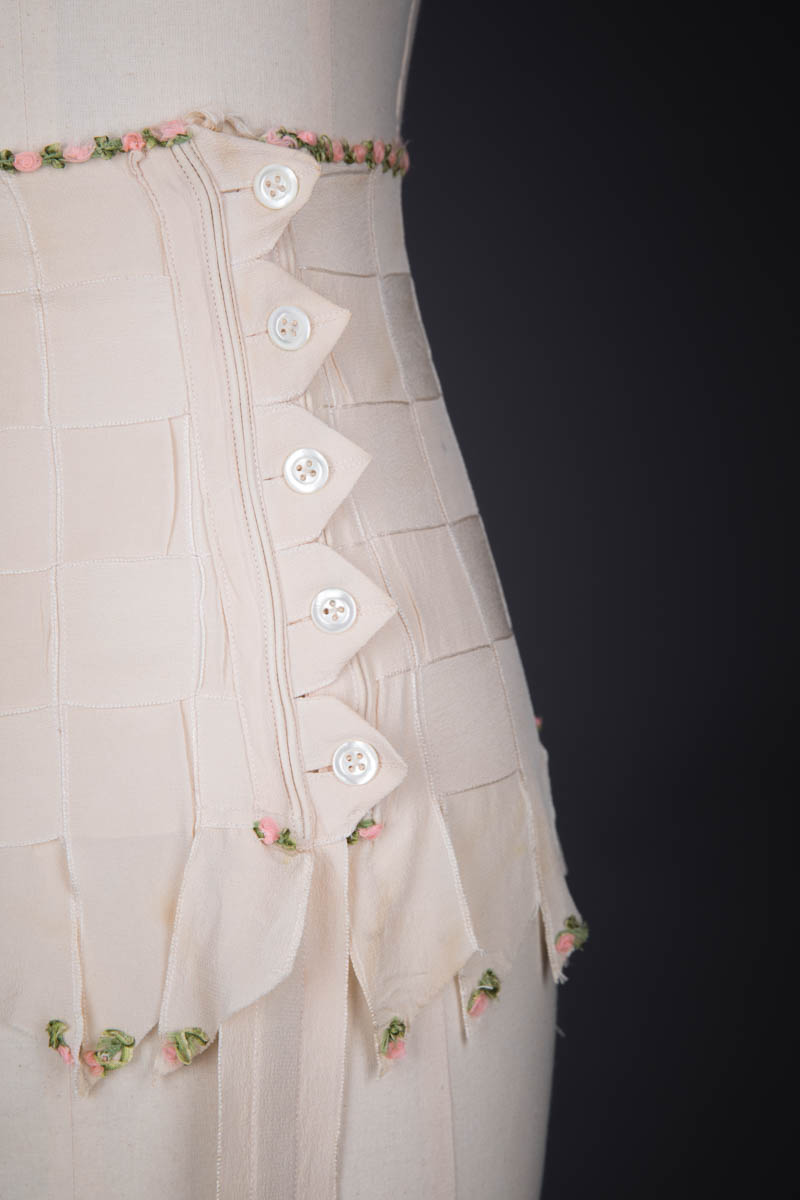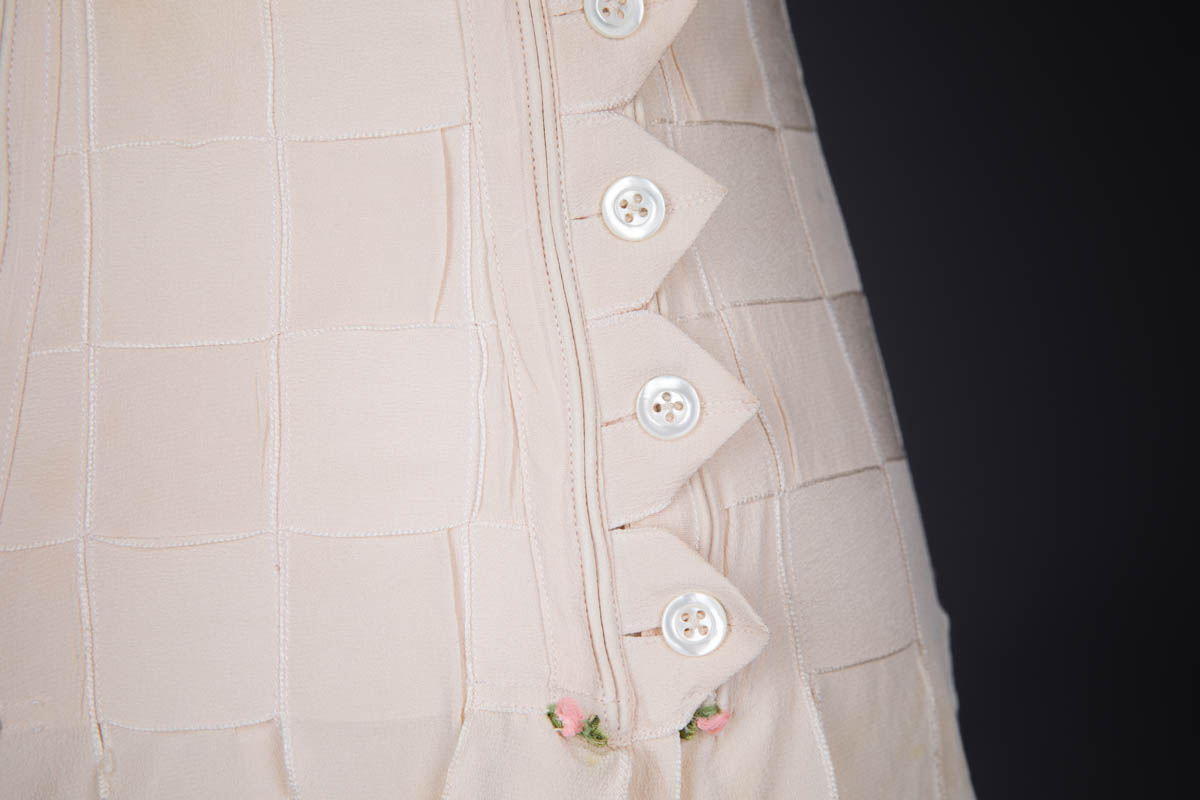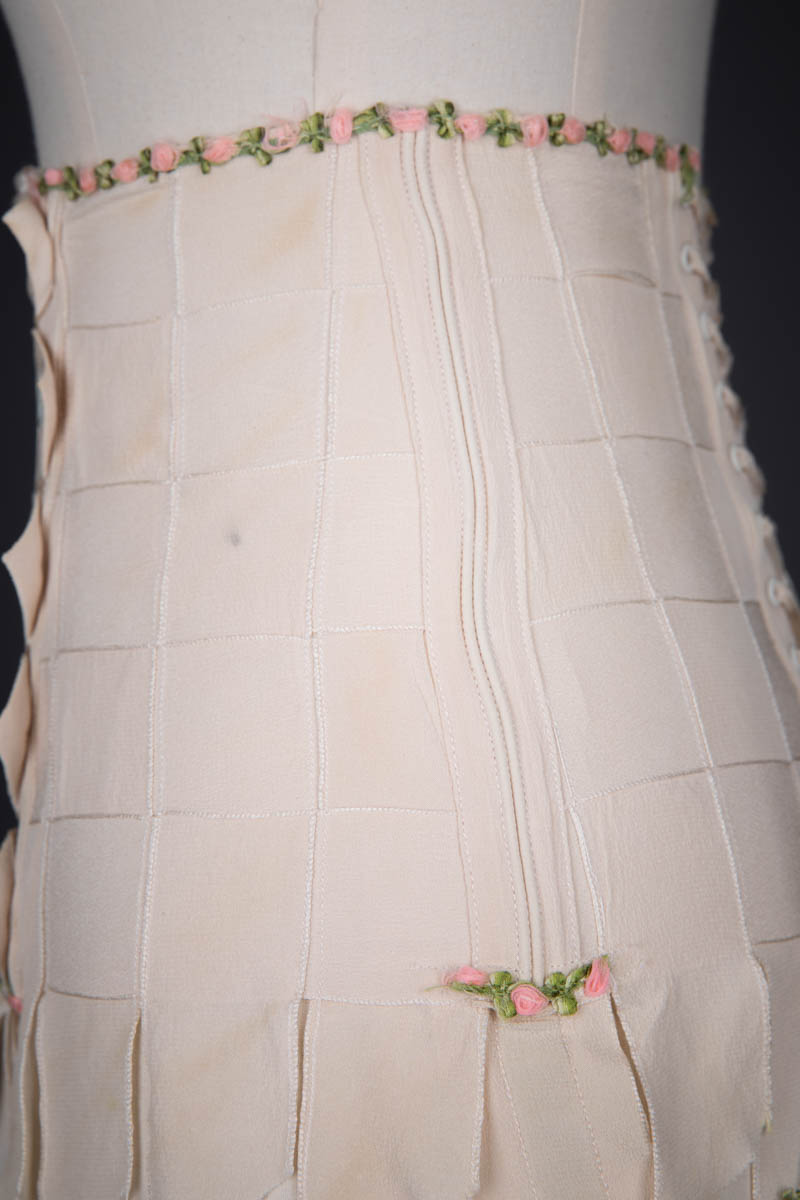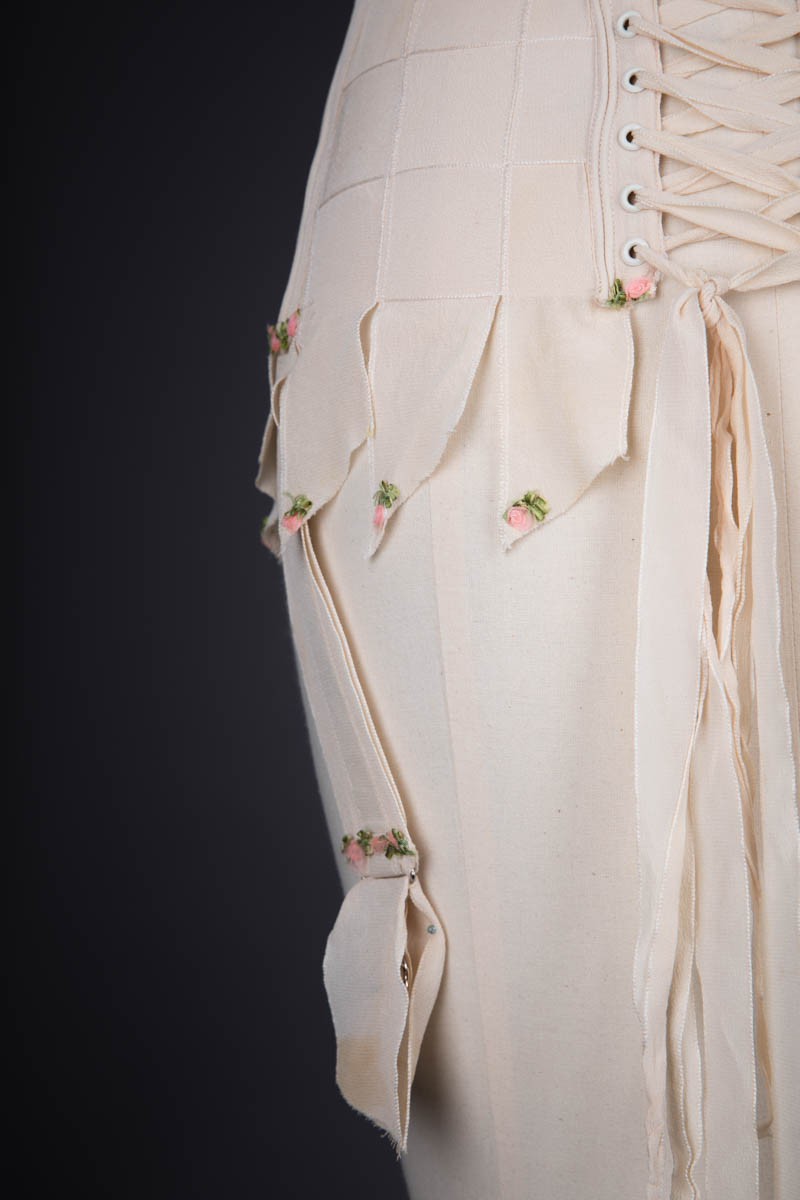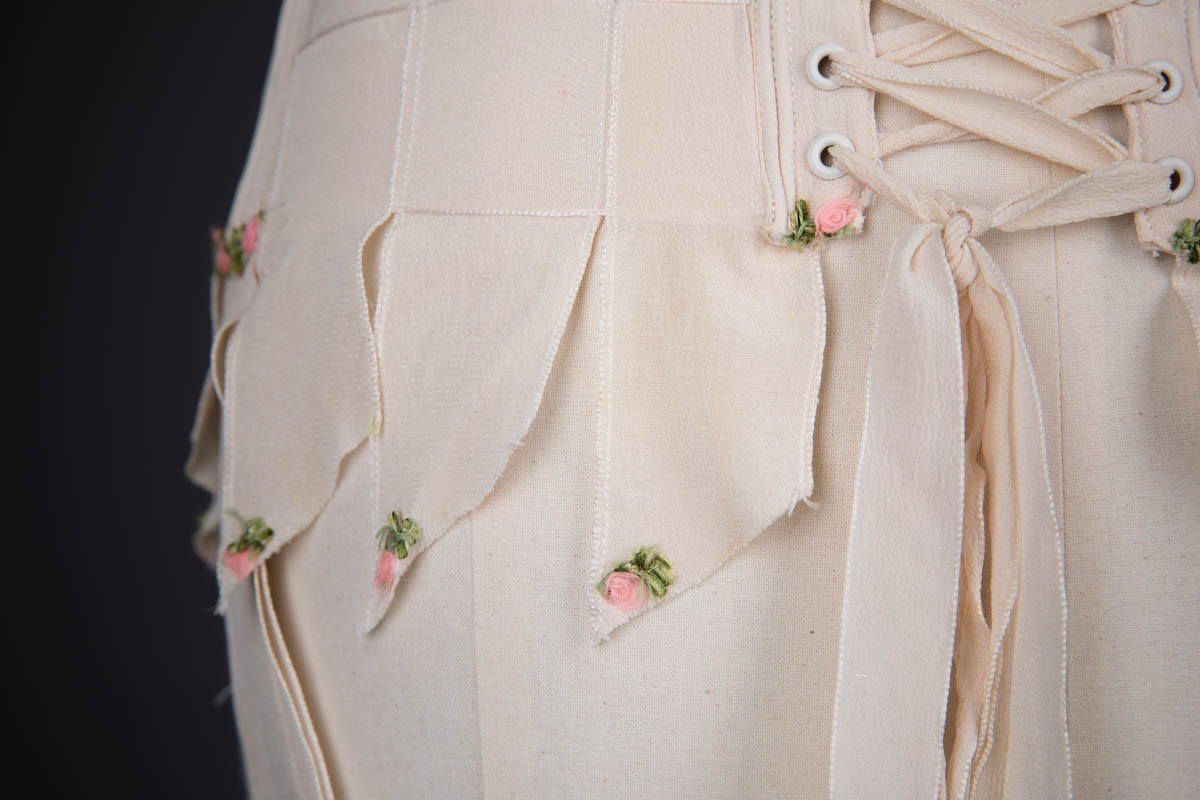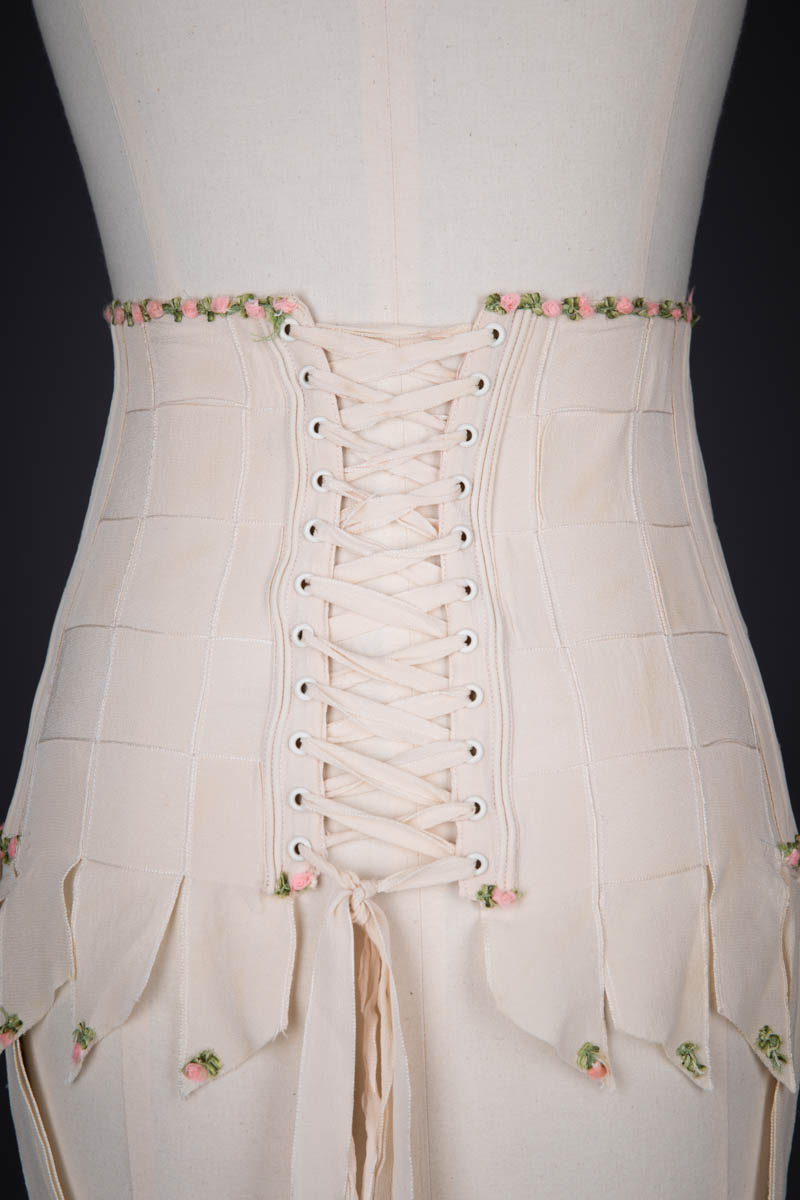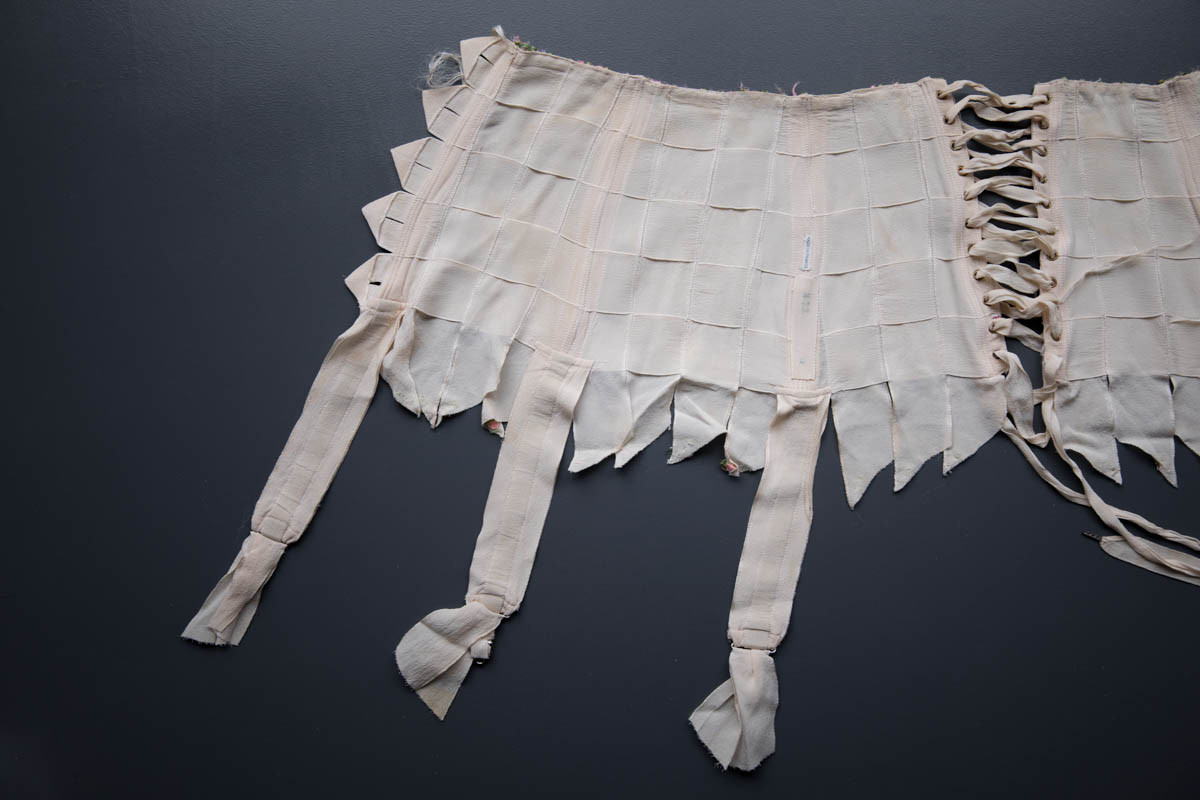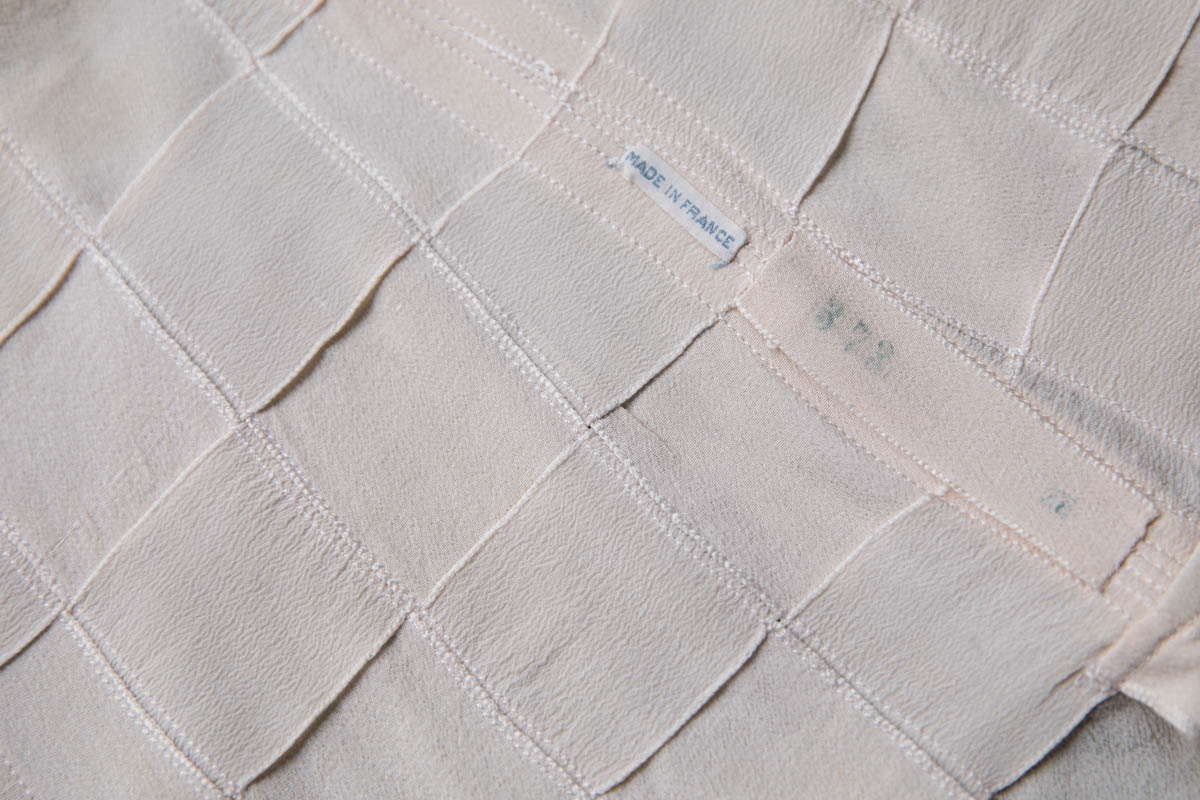Date: c. 1920s
Origin: France
Fabric: Silk georgette
Brand: Unknown
A luxurious girdle crafted from silk georgette. It is largely machine stitched. One inch wide strips of silk are interwoven in a basket weave to form the body of the garment. The garment closes with buttons at the left princess seam in the front, and silk ribbon lacing through metal eyelets at the centre back. Loops are formed with the silk strips to form the button holes. There are are four suspender straps, crafted from silk georgette encased elastic straps with metal garter grips. Silk georgette ribbon flashes are further embellished with silk rosettes. The silk rosette trim is used as embellishment throughout the garment: trimming the underbust edge, and as accents to the bottom of each ribbon edge and suspender point. Such silk rosette trims were originally produced as continuous lengths, and it was common to see these cut into shorter pieces as embellishment work.
The garment is relatively unstructured, with only narrow cording panels framing the button closure, lacing panels and side seams to offer support and shaping. Such lightweight construction would have helped the wearer to achieve the idealized shape of the period, gently smoothing the curves of the hips and flattening the stomach.
Dress reform movement of the previous decades led to manufacturers having to change their corsetry styles in the 1920s. Of course, corsetry was still popular but it came in a variety of styles, lengths, and weights to aid the individual in achieving the ideal straight, flat figure of the period. This particular piece was probably intended to be an occasional wear garment (and meant to be seen, rather than an everyday foundation garment). The garment appears to be unworn and is in remarkable condition for its age, with only some minor fraying visible in the rose trims. It is an excellent example of the lighter, more flexible types of fabric that were used to allow for freedom of movement in the many new physical activities that women were able to indulge in.
This style of girdle became known as a ‘tango corset’. The tango became a sensation in the ballrooms of Paris in the early 1910s and with it came new styles of dress; pieces that promoted ease of movement as well as the more flirty aesthetics that the dance embodied. Dresses were shorter and sometimes slit to the calf, allowing for more of a view of the legs and with it canvas for more embellished lingerie such as stockings. The shorter lines and soft structure of this corset style allowed for a much greater range of movement than previous foundationwear options.
From the collection of Karolina Laskowska. Many thanks to Ryann Farmer for the object research assistance and description.
